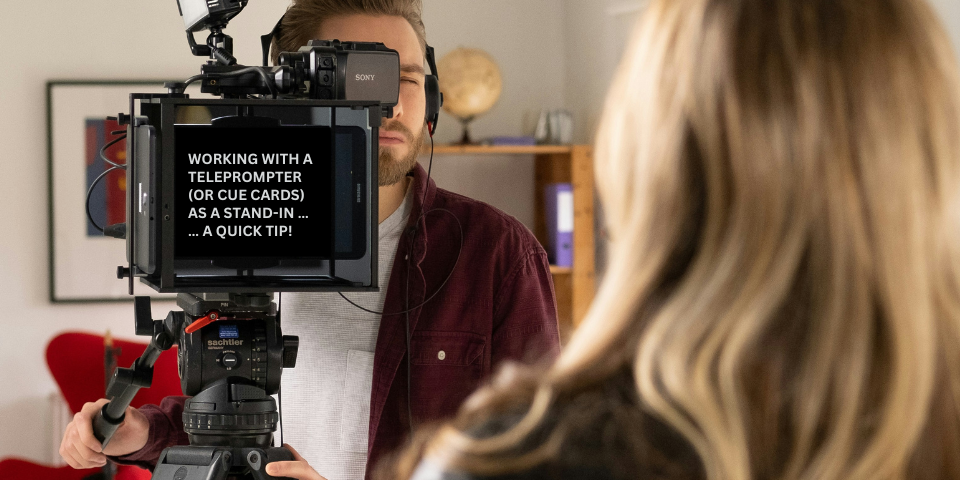When it comes to giving credit to stand-ins, the practice is inconsistent. It should be more consistent: It should be that full-time stand-ins on film projects should be given credit just as their fellow crew members are given.
Here are some reasons why stand-ins aren’t given credit. More importantly, here are some reasons why stand-ins should be given credit and some possible methods for full-time film stand-ins to get credit.
State of the Stand-In Credit
Stands-ins are more often left off film credits than they are awarded credits. This can be a very difficult reality for the stand-in to face: You might be on set every day, contribute to almost every scene, and give up a lot of your life for months while you work on a film, yet you may end up with no film credit as if you never worked on the project. It can feel as if your work, which is critical to the smooth running of the production, is unappreciated, or even seen as worthless.
Part of the problem is that film stand-ins have a conflicting persona: they are members of the crew, but they are also seen as background actors, since they often come from background casting channels and are usually members of an acting union. Background actors are almost never awarded credit, and the logic seems to extend to stand-ins, even though many stand-ins never do background work and work strictly behind-the-scenes with the other crews.
“Stand-In-Nymity”
Despite being crew, stand-ins’ names do not end up on the back of the callsheet where the other crew members are listed. Usually their names never even make the front of the callsheet, where the names of actors are listed. Instead, their names are represented anonymously on the front of the callsheet by impersonal numbers that correspond with the numbers of their actors/characters. As a result, stand-ins are underrepresented in the paperwork of production and basically work in anonymity, making them easily forgotten when constructing end credits.
When stand-ins’ names do make the front of the callsheet (which happens on occasion), these little acknowledgments of humanity and identity can mean a lot to stand-ins, even though the gesture is small. But these references don’t always mean that the stand-in is remembered as a crew member, since still the stand-in is left off the back of the callsheet listing the other crew members.
If Day-Playing Crew Members Get Credit …
When stand-ins make the end credits of a film, I get excited for them. Their production has acknowledged their work. But often the short-lived crew member gets more recognition than the regularly contributing stand-in, so I am saddened to see hard-working full-time stand-ins left off of end credits when day-playing crew members receive credit.
Truth be told, crew members who worked a few days (or even just one day) on a film frequently end up with a film credit. This is not a slight against the hard work of transient crew members, but rather it is a point that the work of full-time film stand-ins should be treated at least as equal to the work of day-playing crew members. Because of their considerable long-term contributions to a production, these stand-ins should receive credit for their work on a film.
If Only Stand-Ins Were Department Members!
While stand-ins usually come from background casting, they definitely function more like crew than like a background actor. If stand-ins were seen as members of a department, they might have a better chance at recognition in the credits.
In particular, when stand-ins are working, they function most like a member of the camera crew. It is often the camera crew that moves the stand-ins around and directs their movements when a shot is being set up. Effective communication between the camera crew and the stand-ins aids the set-up process. Camera crews have been known to thank stand-ins after wrapping production, a gesture implying the dependence the camera crew has on great stand-ins.
Stand-ins might even be considered a part of the script supervisor’s team. Stand-ins attend to the minutiae of blocking details their actor performs both in rehearsal and in takes, which the script supervisor attends to as well. While this is probably not a preferred classification for the stand-in, it is another option for sorting the stand-in into a department.
At very least, stand-ins could be thought of as production assistants (PAs). Nearly all PAs who work on a film production receive credit, and stand-ins should as well because they assist the production.
With the above department assignments, stand-ins likely would make it into the credits along with their fellow crew members without question. They would not go forgotten when compiling the end credits.
Day-Playing Stand-Ins vs. Full-Time Stand-Ins
Of course, there are also hard-working day-playing stand-ins who stand in for actors for just a day, a few days, or even a week or two. If credit can be awarded to them, then fantastic!
But babysteps. The battle is first for the full-time film stand-in. Full-time film stand-ins almost indubitably make valuable contributions to productions, their work goes underappreciated, and their work deserves credit. To overlook their work is to insult their sacrifices in the making of a production.
What Can Be Done?
While many production practices are more or less set, production is comprised of people, and people may be influenced. A production person who sees the value of stand-ins may individually submit stand-ins for credit. However, this is much more the exception than the rule.
Stand-ins may take steps to increase the chances of being awarded a credit. Ultimately, the awarding of credit depends on the decision of the producers, but crew members can make a case to include stand-ins in the end credits. Here are some possibilities–some tested, some untested–that may lead to getting a film credit:
- First of all, work professionally. If you behave professionally as a stand-in, you put yourself in a better position to receive a film credit.
- Ask the background casting director with whom you speak for calltime information about the chances of getting credit. The background casting director may be able to estimate the expectations or champion the cause.
- Ask the 2nd 2nd AD if stand-ins will be given credit. The 2nd 2nd may be in a position to champion the crediting of stand-ins.
- Befriend the camera crew to see if there is a way your name could be submitted for credit. They may know channels to ensure you get film credit.
- Ask the 2nd AD (who is usually responsible for creating the callsheets) if there is a way your name could be added to the callsheet. Even better, see if there is a way your name could be added to the back of the callsheet. Theoretically, you will have less chance of being forgotten if you somehow are included on the back of the callsheet. (As a start, suggest that stand-ins be added as a separate section of the camera crew.)
- When you’ve made an outstanding contribution to production when standing in one day, you may be in a good position to request credit. Did you stand-in in a precarious situation? Do you regularly run lines with actors during rehearsals? Did you do take after take of sprinting in the searing heat? Your work might be better noticed on days like these.
- Take your time in figuring out whether you will get credit. Currently, the awarding of credit is not standard, so your work should trump your interest in credit. Don’t jump right to asking for or demanding credit, but finesse your way toward asking. Build relationships and friends with crew first, and down the line ask how credit is awarded.
What to do about getting film stand-ins credit? If you have tips for getting into a film’s credits and having your stand-in work acknowledged, offer your tips below, or email us at Ask Stand-In Central.






Thank you! I hope some productions see this and try to consider allowing stand-ins to be in the credits more often. I was recently a regular stand-in for a movie shot this summer in West Virginia. It was definitely time-consuming.
I’m a stand in on a Netflix original series currently in production. I’m recognized on set as second team leader. Which is nice… But I want credit. I’m on set every day as I stand in for 2 of the principles and I regularly read lines for the actors (the other end of phone call scenes).
12-16hrs/day, 6 days a week in 86+ degrees… I just want my name on it somewhere with the rest of my coworkers. 🙂
I really appreciate this being written. Having just watched a film I worked on back in 07 I, like usual watched the credits… Just encase my lil’ old name was recognized. Nope.
But really-it would be something I would like to see. No longer an aspiring actor myself, I do however know what it takes and how hard it can be feeling totally snubbed by not only the actors you are standing in for but also the production.
Good luck to all, make sure you enjoy what you do
It makes a great deal of sense for me having just stood in for John Lithgow on Daddy’s Home 2.
This!!! I just watched a really good movie on netflix and when i watch the credits, i always try to see if stand ins are listed. This one didn’t and I still haven’t seen a movie do it. That’s a lot of hard working people being left in the dust. Photo doubles too. They’re on camera. Its already embarrassing when you say you’re an actress and people ask what have i seen you in? Its also embarrassing to be excited that a movie you worked on came out and people dont see your name.
Ive worked as a FT, PT and Utility standin. The last film I worked on I stood in for several different actors, sometimes they don’t even look too much like me. They just needed a body. That’s more work days on set. Im used to 12 hour days, its an actors 9-5. The only time I’ve felt seen as an SI was during the superbowl commercial with the state farm agent and Drake. I was so happy and excited and I wasn’t even in it. What’s helped me feel seen is having a stand in resume. All my credits are listed and it helps to get me more work.
It all goes back to what Ive learned in theatre, there are no small parts, just small actors. Everyone is listed on the playbill/program no matter the contribution and everyone is invited to the cast party to celebrate their hard work. Hollywood should be the same! (Sorry for the diatribe)